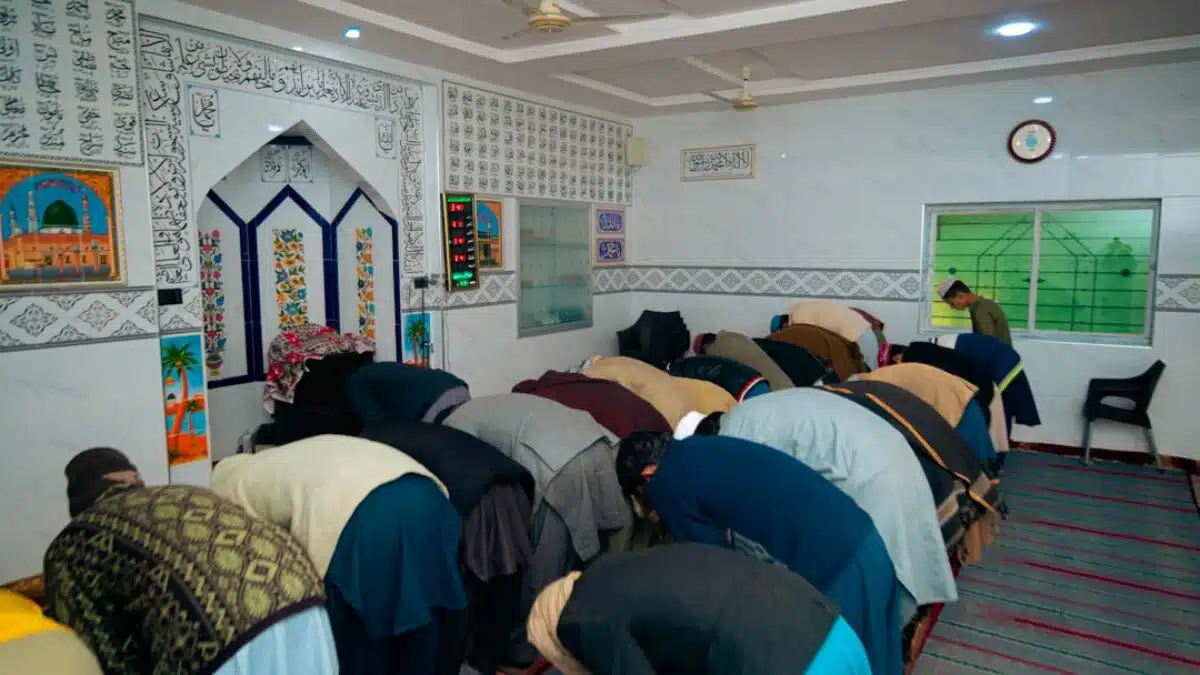Prayer (Salah) is the cornerstone of a Muslim’s daily life, a sacred conversation with Allah that demands precision, humility, and presence of heart. Yet even the most devoted worshipper occasionally falters—forgetting a verse, mispronouncing a word, or skipping a posture. Instead of despair, Islam offers a merciful, practical framework for correcting mistakes in Salah. This guide walks you, step by step, through every common error and its remedy, so you can pray confidently and continue your spiritual ascent without disruption.
Understanding Mistakes in Salah
Before diving into solutions, we need to define what actually constitutes a mistake in the ritual prayer. The classical jurists classify errors into three broad categories:
- Obligatory (Fard) omissions – elements whose absence invalidates the prayer.
- Necessary (Wajib) lapses – elements that must be repeated or compensated for through sujud al-sahw (prostrations of forgetfulness).
- Sunnah imperfections – recommended acts whose omission does not affect validity but reduces reward.
Understanding this taxonomy helps you react proportionately. A missed Fatiha requires restarting the rakʿah, whereas a skipped duʿāʾ of sitting can be rectified with two prostrations. The Prophet ﷺ said, “If one of you forgets in his prayer, let him prostrate twice before the taslim.” This hadith encapsulates the spirit of flexibility that pervades Islamic jurisprudence.
Major vs. Minor Errors
Major errors include:
Missing one of the five pillars of the rakʿah (standing, recitation, bowing, prostration, sitting for tashahhud). Changing the fundamental sequence of postures. Speaking intentionally without necessity.
Minor errors include:
Accidentally omitting a recommended supplication. Touching the nose to the ground before the hands in prostration. Raising the hands to the shoulders instead of the earlobes when saying takbirat al-ihram.
Key Components of Correcting Prayer Errors
Rectifying mistakes is governed by three pillars: recognition, intention, and method. Each must be present for the correction to be valid.
Recognition: Detecting the Mistake
Self-awareness is the first step. The Prophet ﷺ taught us to cultivate khushūʿ (mindfulness) so that lapses are felt immediately. Real-life scenario: You stand for the third rakʿah of Maghrib, recite Fatiha, and suddenly realize you forgot the tashahhud in the second sitting. Recognition occurs the moment your heart registers the omission.
Intention: Formulating the Resolve
Once the mistake is noticed, silently articulate your intention (niyyah) to correct it. Intention is a mental act—no verbal formula is required. Example: “I intend to make up the forgotten tashahhud before completing this rakʿah.”
Method: Executing the Remedy
The remedy varies according to the error’s category. Below is a concise reference table:
| Type of Error | Effect on Prayer | Required Correction | Evidence |
|---|---|---|---|
| Missed Fatiha | Rakʿah invalid | Repeat the rakʿah | Bukhari, hadith of the man who prayed badly |
| Extra rakʿah | Requires sujud sahw | Two prostrations after taslim | Abu Dawud, hadith of Dhul-Yadayn |
| Skipped tashahhud | Requires sujud sahw | Two prostrations before taslim | Malik, Muwatta |
| Missed sunnah dua | None | Optional; no prostration | Consensus |
Benefits and Importance of Correcting Mistakes Properly
Beyond the obvious benefit of preserving the prayer’s validity, correcting mistakes fosters several spiritual and psychological advantages:
- Strengthens mindfulness: Each correction trains your heart to remain alert, cultivating iḥsā (excellence).
- Reinforces humility: Admitting error before Allah nurtures tawāḍuʿ (humility).
- Teaches jurisprudence: Repeated practice embeds fiqh rulings into long-term memory.
- Preserves community harmony: When congregants know the rules, collective prayer flows smoothly.
The Prophet ﷺ compared the one who perfects his prayer to “a rider who stops to tighten his saddle before continuing—he reaches his destination safely and swiftly.” Likewise, taking a moment to fix an error prevents greater spiritual loss later.
Practical Applications: Step-by-Step Scenarios
To transform theory into habit, we present detailed walkthroughs of the most frequent prayer mistakes. Read each scenario carefully, then rehearse it privately until muscle memory takes over.
Scenario 1: Missing the Sitting for Tashahhud
- Recognition: As you rise for the third rakʿah, you recall you did not sit after the second.
- Immediate Reaction: Do not go back; continue to the third rakʿah.
- Completion: Finish the prayer normally.
- Sujud Sahw: After the final tashahhud and salat al-Ibrahimiyyah, say Allahu Akbar and prostrate twice.
- Taslim: Conclude with as-salamu ʿalaykum to the right and left.
Tip: Place your right hand on your thigh immediately after the second sujud to remind yourself to sit.
Scenario 2: Adding an Extra Rakʿah
- Recognition: During the fourth rakʿah of ʿIshaʾ you remember you have already prayed four.
- Immediate Reaction: Stop the extra rakʿah immediately.
- Return: Sit for the final tashahhud in the original fourth rakʿah.
- Sujud Sahw: Perform two prostrations after taslim.
Example: Imam Ahmad once led Fajr with three rakʿahs inadvertently. Upon realization, he completed the prayer, said taslim, then prostrated twice.
Scenario 3: Doubt About the Number of Rakʿahs
Pause and Analyze: The Prophet ﷺ instructed, “Build upon what you are certain of.” Practical Rule
If you are 60 % sure you prayed three, consider it three. Complete the missing rakʿah, then perform sujud sahw. Example: While praying Maghrib, you cannot recall whether you stood for the third rakʿah. Assume you did not, stand up, recite Fatiha, then finish and prostrate twice.
Scenario 4: Mispronouncing a Verse
- Major Distortion: If the meaning changes (e.g., malik yawm al-deen becomes malik yawm al-dunya), repeat the verse correctly.
- Minor Slip: A minor tajweed error without meaning change requires no correction.
Tip: Recite slowly; the Prophet ﷺ said, “Whoever recites quickly before the imam finishes will have no reward.”
Scenario 5: Forgetting to Recite Aloud or Silently
Subvocal instead of Audible (e.g., in Fajr first two rakʿahs):
Continue silently. Perform sujud sahw before taslim. Audible instead of Subvocal (e.g., in last two of ʿIshaʾ):
Continue aloud. Perform sujud sahw after taslim.
Advanced Topics: Group Prayer and Leading Others
Imam’s Mistake
If the imam forgets:
- The entire congregation follows his correction.
- The Prophet ﷺ said, “The imam is appointed to be followed; do not differ with him.”
- If a follower recalls the mistake earlier, he taps the imam’s shoulder to signal.
Follower’s Personal Lapse
If the follower alone forgets (e.g., he misses a rakʿah while tying his shoelaces):
- He completes his own prayer.
- He makes up the missed rakʿah after the imam’s taslim.
- He performs sujud sahw after completing the makeup.
Women’s Prayer Behind an Imam
Women follow the same rules but prostrate in the last row to avoid gaps. If the female follower miscounts rakʿahs, she remains seated until the imam completes and then adjusts as above.
Frequently Asked Questions
What if I am unsure whether my sujud sahw was valid?
Repeat the two prostrations calmly. Doubt in ʿibādāt is resolved by taking the safer path. The jurists say, “Certainty is not removed by doubt.”
Can I correct someone else’s prayer silently?
Yes, through an unobtrusive gesture—tapping the foot, coughing lightly—but do not speak. If the mistake is major (e.g., facing the wrong direction), intervene firmly but politely after taslim.
Do I need to learn Arabic to avoid recitation errors?
Mastering tajweed is ideal, but Allah judges by capacity. If pronunciation is virtually impossible (speech impediment), recite to the best of your ability; the mistake is forgiven. However, strive to memorize at least Surah Al-Fatiha accurately.
How does sujud sahw differ in different madhhabs?
| Position | When to Prostrate | Recitation During Prostration |
|---|---|---|
| Hanafi | Before taslim only | Subhana Rabbiyal-aʿla |
| Shafiʿi | Before or after, depending on error | Same as above |
| Maliki | After taslim primarily | Silent glorification |
| Hanbali | Follow textual evidence closely | Same |
What if I remember the mistake after I have left the prayer area?
If the lapse is minor (e.g., forgotten duʿāʾ), no action is needed. If it is major (e.g., missed rakʿah), return to the spot, repeat the prayer, and perform sujud
























Post Comment